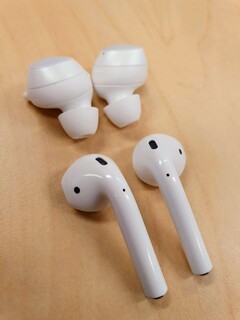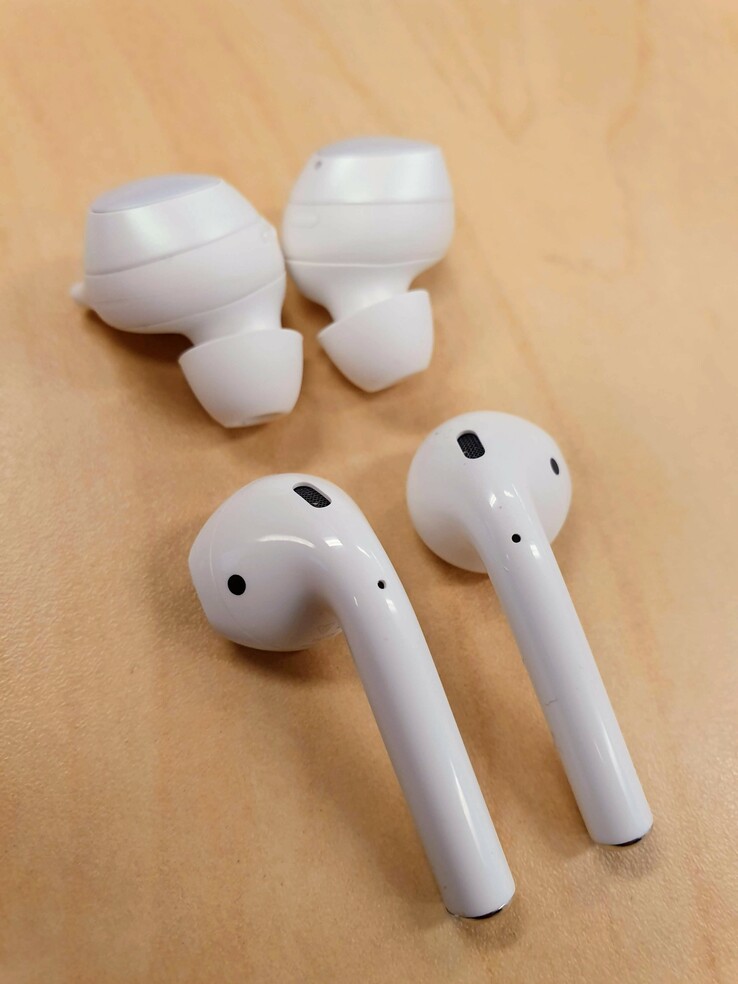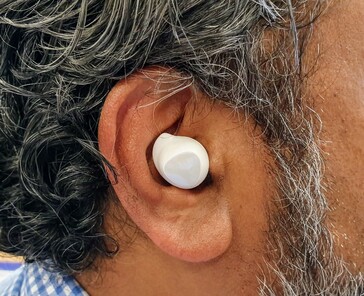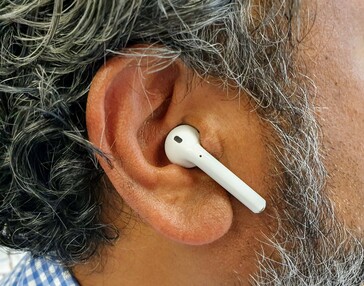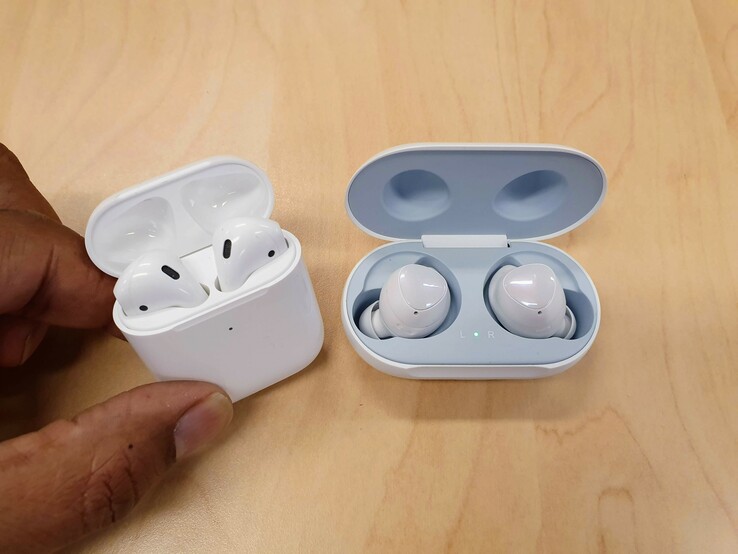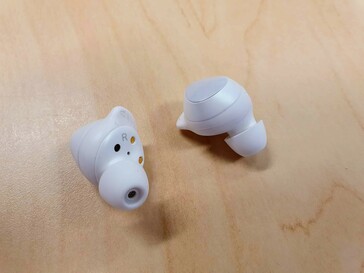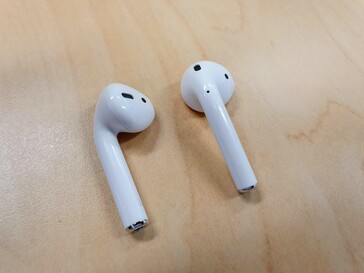Intro
With 3.5 mm headphone jacks disappearing from smartphones whether we like it or not, it has sped up the adoption of Bluetooth headphones. We are undoubtedly heading in the direction where it will be wireless everything, despite lingering questions about the possible impact this might have on our health and well-being. Of course, Bluetooth headphones have been around for many years, well before Apple arrived on the scene with its AirPods. While very convenient, these were originally plagued by limited bandwidth in earlier iterations of the Bluetooth standard, which affected sound quality.
However, over the past few years the arrival of newer generations of Bluetooth coupled with technologies like Qualcomm’s AptX and Sony’s LDAC have helped to substantially improve the sound quality. In terms of on-ear or over-ear headphones, companies like Bose, Sony and Beats have been prominent and highly successful with their wireless headphone designs. Apple popularized truly wireless earbuds with the launch of its AirPods –most previous designs involved the use of a band or cord running between the two buds.
Not only did Apple manage to eliminate the wires in this type of design, it also managed to deliver some seriously impressive sound from what is a very compact package. Compatible with any Bluetooth handset, they have naturally been the go-to headset for iPhone users but have also proven popular with Android users as well. Samsung launched a couple of generations of Gear IconX wireless in-ear buds but without tremendous success. Its first serious attempt to tackle Apple’s AirPods has arrived in the form of its new Galaxy Buds. To help speed up adoption, it also bundled these free with pre-orders of its new Galaxy S10 flagship smartphone range.
Apple hasn’t been sitting still either, though. It has now launched the second-generation of its AirPods that now feature a new custom H1 chip, which handles both wireless duties as well as delivering new audio circuitry. There is also the option of a Qi-based wireless charging case that has also been made available for first-generation AirPods owners. Ostensibly, these were meant to be charged with Apple’s AirPower charging mat, which spectacularly turned into nothing more than vaporware. However, as has been highlighted with delight by Samsung fans on the blogosphere, they will charge perfectly well on the back of a friend’s Galaxy S10 with its Qi-based PowerShare feature.
So how do Apple’s new AirPods stack up against Samsung’s new Galaxy Buds?
Design and Comfort
Having already seen Samsung’s truly wireless Gear IconX design, it was something of a shock to see Apple’s design approach when AirPods were first unveiled. Even now, although you see them everywhere, they still look odd to say the least. It’s as though Apple is deliberately calling attention to their wireless design by lopping off the cords where they would have joined the regular earbuds. However, there is logic to Apple’s design approach, as when fitted correctly the bottom of each AirPod is where Apple has fitted a microphone that is pointed in the general direction of the user’s mouth for the purpose of making calls clearer. It’s a hybrid of in-ear buds crossed with the old-style single Bluetooth earpieces you’d see the suits on Wall Street wearing to make Bluetooth phone calls. However, as with those types of devices, you do feel highly self-conscious when wearing them in public, but you take comfort in knowing that looking a bit ridiculous is a small price to pay for sound quality, the ease of use and general levels of comfort.
However, on the latter point, while they might be generally more comfortable to wear than full over-ear or on-ear headphones (particularly in summer), they don’t provide a perfect seal – far from it and quite deliberately. Not everyone likes having earbuds that one has to stick into their ear canal, which is the approach Samsung has taken with both its Gear IconX and now Galaxy Buds. Conversely, this approach provides a perfect seal and typically provides better passive ambient sound isolation and thus better sound. Further, the design approach of Apple’s AirPods certainly doesn’t accommodate all ear shapes, meaning that for some people they will just keep falling out.
Samsung’s design approach with its Galaxy Buds is less obtrusive. They look similar to most other truly wireless earphones on the market, and while also calling out their wireless status, don’t do it quite as loudly as Apple’s design approach. Consequently, one doesn’t feel half as self-conscious wearing them in public. As a traditional earbud design, they ship with alternative ear tips as well as wing tips so that, as a result, they will fit any ear comfortably and with a perfect seal. A big advantage they have over Apple’s AirPods is that they don’t feel like they will accidentally fall out, which can be a cause of constant concern for some users.
So, aesthetically speaking, the Galaxy Buds win in the looks department, but the sheer number of people wearing Apple’s AirPods is undoubtedly helping to normalize their appearance. Functionally (and fit aside for the moment), the AirPods look the way they do for a reason – potentially better call clarity for the listener. Overall, as light and comfortable as AirPods are, the Galaxy Buds have a more reassuring in-ear feel.
Sound quality
While the second-generation AirPods look exactly like the original design, they do feature all-new audio circuitry. We had a first-generation set on hand to A-B them and it is apparent that there are some subtle, but noticeable, improvements in sound quality. We put this down to potentially more powerful amplification in the new AirPods. Tonally, they are about the same as the previous model, while the overall balance between the low, mid and high frequencies is spot on. The improved loudness means that the new AirPods have slightly more punch than the first-generation model, which helps to compensate for the open-ear approach that Apple has adopted. To our ears, the bass comes through better than before but these are really subtle differences that you really need to listen out for. The soundstage also seems to be improved, with excellent stereo separation.
Tellingly, Apple doesn’t really make a particularly big deal about the sound improvements in the new model but focuses on other features like hands-free Siri functionality and additional battery life. What this means is that if you own the original AirPods, you certainly don’t need to rush out to buy the new model. We think that Apple was already pretty close to the limits of what can be achieved by this particular form factor.
We’ve read elsewhere that pound-for-pound Apple’s AirPods are the best headphones you can buy. It is hard to argue with that assessment. They deliver the type of sound quality out of such a small package that punches well above its weight. Compared to our Sony WH-1000XM3s, however, they are no match for overall depth and complexity of sound. But for the sheer convenience and light-weight ease of use that they offer, they are still more than acceptable for listening to music on the go. The open-ear design, however, means that in crowded situations like on a train commute, you might prefer to switch to over- or on-ear headphones.
This is where the Galaxy Buds may pose the better overall proposition when listening to music in all situations without resorting to an additional outlay. Built-in sweat resistance and better fit means that you won’t need to consider also purchasing a set of Beats PowerBeats Pro for getting down to the gym or going out for a run. The better seal means that its passive noise cancellation works better in crowded situations while delivering a pleasing overall audio experience. However, despite Samsung owning the highly regarded audio brand AKG and having the team work on the new Galaxy Buds, they produce sound quality that we would only call acceptable. The tone isn’t quite as rich or lush as Apple’s AirPods and there is a little too much mid-range for our liking. You can tweak this using the companion app but the sound is still adrift of the tonal purity offered by the AirPods.
If forced to choose between the new AirPods and the Galaxy Buds for pure listening pleasure, we would choose the AirPods every time. They are the choice for the more discerning listener. However, most people aren’t discerning listeners and probably wouldn’t notice or care about the difference in audio quality between the two. The Galaxy Buds are certainly good enough but do fall short of the AirPods for outright listenability.
Charging and Active Use Times
The new AirPods deliver a claimed 5 hours of listening time and now up to 3 hours of talk time from a single charge. This compares with up to 6 hours of listening time with the Galaxy Buds with talk time unspecified by Samsung for some reason – possibly because they aren’t as good for taking and making calls. Apple’s supplied charging case will also give you an additional 24 hours of listening time while Samsung’s smaller case only offer an additional 7 hours of charge. A 15-minute charge in the AirPods case will also give you 3 hours of additional listening time.
By comparison, a similar 15-minute quick charge with the Galaxy Buds case only yields an additional 1.7 hours of listening time. How much listening time one nets from a session will depend on a variety of factors, including the number of calls made along with time spent switching between devices and the volume at which music is listened to. The addition of the new Qi-enabled wireless charging case as an option on the AirPods means that it can go head-to-head with the Galaxy Buds in this regard. However, Qi wireless charging is a standard feature for the Samsung buds. If you’re going on a long-haul flight, the AirPods are the ones that you are going to want to have with you.
Taking and Making Calls
Taking and making calls on the AirPods and the Galaxy Buds are a better way of telephone operation than having to press a smartphone into the side of your face to listen to the person speaking on the other end, particularly when in public spaces. It is also probably safer from a SARs smartphone radiation perspective too. However, when doing an A-B test using the AirPods and Galaxy Buds with someone on the other end of the line, there was a clear preference from the listener’s perspective to the caller on the other end using Apple’s AirPods. Its combination of dual beamforming microphones gives it a distinct advantage over the Galaxy Buds microphones, which aren’t as accurate or clear by comparison.
Verdict
Apple’s second-generation AirPods with wireless charging case retail for US$199 while the version with the non-wireless charging case retails for US$159, making the price of admission to this ecosystem a little steep. The Samsung Galaxy Buds retail in the single configuration with wireless charging case for just US$129, thus offering a more appealing proposition. However, you are getting arguably better technology, a better listening experience, a better phone call experience and better battery life for your money if you opt for the AirPods. Choosing the Galaxy Buds gives you a very good overall package that is arguably less conspicuous and will deliver a perfect fit for a wider range of users – that said, not everyone likes in-ear headphones that sit within the ear canal.
The AirPods are the choice for audio-lovers when it comes to this particular subset of the headphone market. In our view, they are the only “insanely great” product that Apple currently makes and have been justifiably a runaway hit as a result. The second-generation AirPods takes the leading in-ear headphones on the market and makes them even better. The Galaxy Buds are a worthy competitor but come up a little short in terms of their audio performance and in other areas. They are very good but come in second in this comparison.


 Deutsch
Deutsch English
English Español
Español Français
Français Italiano
Italiano Nederlands
Nederlands Polski
Polski Português
Português Русский
Русский Türkçe
Türkçe Svenska
Svenska Chinese
Chinese Magyar
Magyar